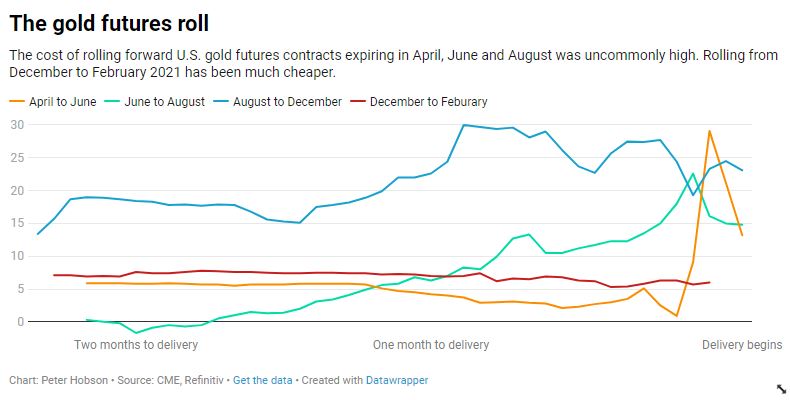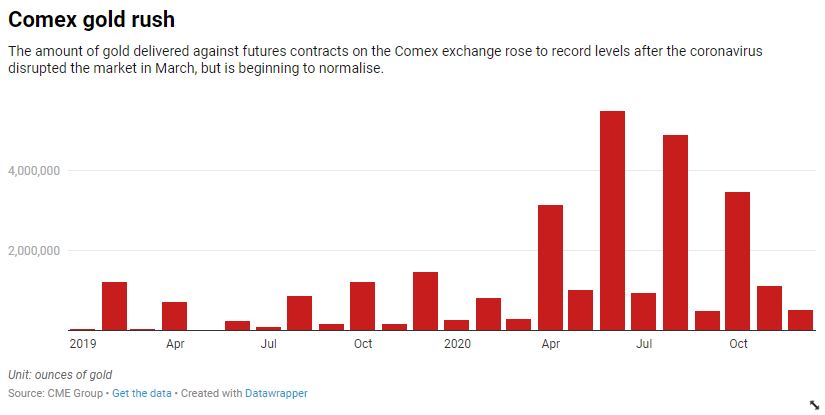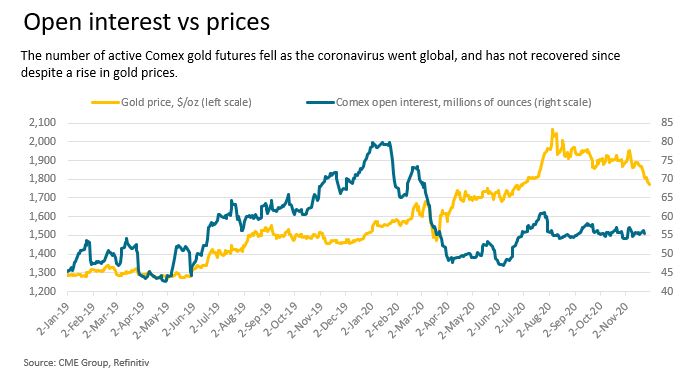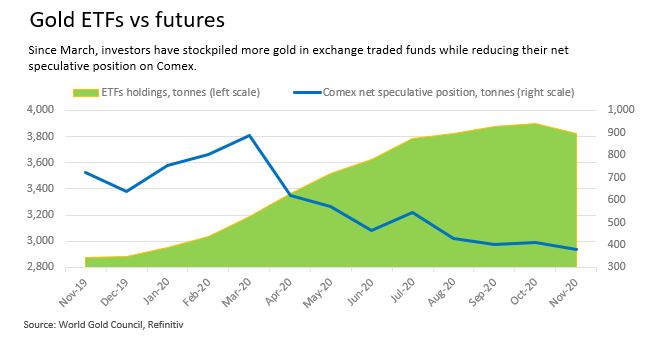
Falling costs to roll forward U.S. gold futures contracts suggest the market is moving closer to normal trading after turmoil caused by COVID-19 raised investors’ overheads, curbed activity and funnelled massive profits to investment banks.
Since March, when volatility linked to the pandemic dampened banks’ willingness to sell futures contracts, the cost of swapping expiring futures for later-dated ones – a “roll” that investors wishing to maintain their positions must perform every few months – has been far higher than usual.
This has deterred some investors from buying and holding gold on CME Group’s Comex exchange in New York, the world’s largest precious metals futures trading venue.
It also generated record revenues for investment banks and others selling gold – income that will likely fall back as trading normalises.
The roll of futures expiring in December has been much cheaper.
More than 400,000 December contracts representing over 40 million ounces of gold have been swapped this month for futures expiring in February which have cost around $6 an ounce more, CME and Refinitiv data show.
That compares to a roughly $25 an ounce premium for the December future over the August one when those two contracts were exchanged, and a cost of around $15 an ounce to roll to August from June.
The cost of the December to February roll has also been more stable than any since March as investors spaced out their transactions over a longer period.
CME declined to comment.

Forty million ounces of gold is worth around $70 billion (52.54 billion pounds) at current prices and at $6 an ounce costs around $250 million to roll.
Sellers of futures make money when the price difference between the expiring and later-dated futures exceeds the cost of financing and storing gold for the period between the two.
“The spread is tighter (this time) but wider than it would be before March,” said an executive at a large gold trading bank, adding that because interest rates are so low, the December roll is still very profitable.
Also pointing to a normalisation of the market are lower gold deliveries.
Since March, record amounts of physical gold have changed hands on Comex, peaking in June with deliveries against 55,102 contracts representing 5.5 million ounces.
As of Monday, traders had signalled they would deliver against 5,371 December contracts and 31,861 contracts remained open. Some of these will be delivered against and others rolled forward in the coming weeks.

The market is still not fully recovered. Gold prices rallied to record highs this year, and such rallies usually increase trading activity, but the number of active Comex contracts has lagged, with some investors using exchange-traded funds instead.
“An important measure of how well the market has recovered is when open interest picks up and the roll cost stays low,” said John Reade, chief strategist at the World Gold Council.


(By Peter Hobson; Editing by Jan Harvey)
Comments